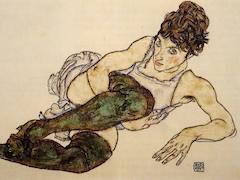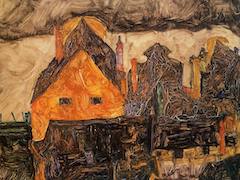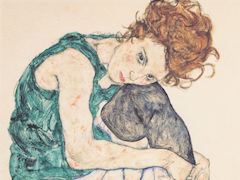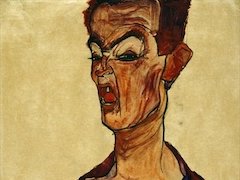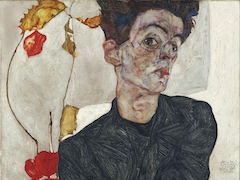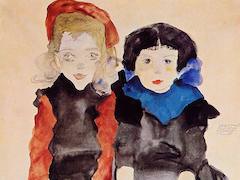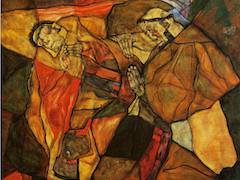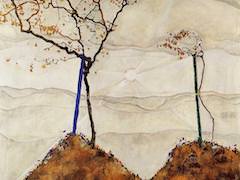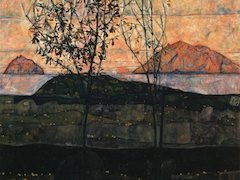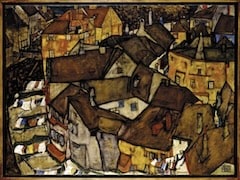The Bridge, 1913 by Egon Schiele
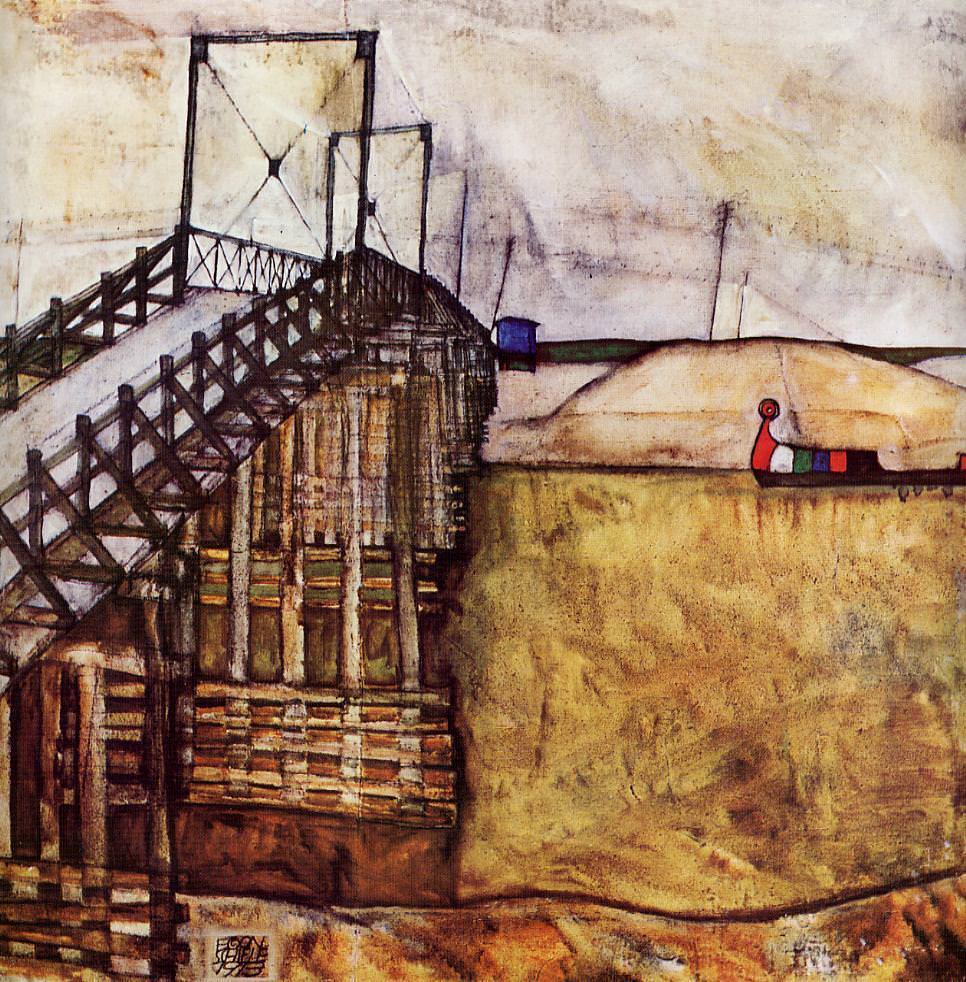
Toward the end of 1912, Gustav Klimt introduced Schieleto the industrialist August Lederer and his wife, Serena. The lederer were among Klimt's most important patrons, but they were initially less than enthusiastic about Schiele's far more abrasive Expressionist work. Nevertheless, their adolescent son Erich, a budding collector, rapidly developed what became a lifelong fascination with Schiele and his art. The slightly older artist seemed to him a romantic, bohemian figure, whose sexual exploits (such as Erich imagined them to be ) held particular appear. As an adult, Erich lederer formed on of the world's foremost collections of Schiele drawings and watercolors.
In 1912, the fifteen-year-old Lederer determined to use the proceeds of a winning lottery ticket to commission a portrait, and Schiele arrived at the family estate in Gyor, Hungary, shortly before Christmas to begin work. August Lederer put at his disposal one room of his enormous liquor factory to use as a studio, and Schiele, treated as an honored guest, was allowed to share in the family's holiday celebrations. After a brief trip back to Vienna for New year's, the artist returned to Gyor in January 1913 to complete the commission. Exploring Gyor in his spare time, he came upon the subject of The Bridge. Schiele was delighted with the structure's unusual architecture, which he called "quite Asiatic, Chinese-like". The painting was begun in the early weeks of 1913 and finished by winter's end. Like other paintings done at this time, when Schiele was especially low on funds, The Bridge was executed on two pieced-together lengths of canvas.

